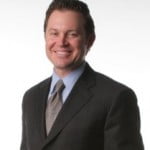As a Plastic Surgeon, I learned have learned far more from being in practice for over ten years than I ever did in my residency training. And from that experience I’d like to impart a few secrets that your Plastic Surgeon may not be telling you. These secrets will help you not only achieve a better result but may also help you establish better expectations before your surgery which can then make the process and the results much better in the long run.
5 SECRETS OF BREAST AUGMENTATION:
- 1. Your Plastic Surgeon may have little to no experience performing breast augmentation
- 2. What you look like before surgery is the one determinant of how you are going to look like after surgery
- 3. What you eat after your surgery may play a huge role in how easily you heal and the type of complications you can avoid
- 4. Implant size is less important than you think
- 5. A female Plastic Surgeon does not help you understand breasts anymore than a male Plastic Surgeon
Let’s begin with the first topic. As in every industry, experience is essential and what your Plastic Surgeon knows (and does not know) will have a huge impact on how successful you will be in achieving the result you actually want. As a young physician, I entered medicine with very little experience under my belt and simply gained knowledge as I performed more and more of this specific procedure. And what I have learned is the fact that every single patient is different and that you need to approach every single case as it’s own. Please don’t get me wrong, younger surgeons do have a wealth of experience but they simply haven’t encountered the challenging cases yet and may not appreciate the small differences and challenges when they do arise. Despite what many surgeons would like you to believe, breast augmentation surgery is challenging and is rarely a chip shot. That being said, the more cases your Plastic Surgeon has performed the better able they are to identify not only how to achieve a solid result and stay out of trouble but also how to identify the problem cases before they enter the operating room. In his landmark book, “Outliers”, author Malcolm Gladwell points to individuals such as Bill Gates, Michael Jordan and others to conclude that it takes 10,000 hours performing any procedure or activity to truly become an expert. Think about that the next time you are choosing a Plastic Surgeon. Look at their before/after gallery and ask yourself why there are so few examples. And, ask them how many procedures they have actually done. In my case, I have performed over 3000 breast procedures and am now probably closer to 4000 cases. Do you think that may help me identify challenges easier now than when I had only performed 20 to 30? It simply makes sense. Also look for a Plastic Surgeon whose practice is focused predominantly on breast enhancement and not for someone who just does this once in a while. Becoming an expert takes practice and it takes time. Both are essential ingredients for an optimal outcome.
Next, what your breasts look like before surgery really dictates how easy good results are going to be to attain and the shape and character of your appearance after surgery. If your breasts are asymmetric, if your lower poles are constricted, or if you have lost significant volume as the result of either pregnancy or weight loss, then your procedure is simply going to be more complex than the 19 year old who presents with perfect symmetry, who has never had kids, and who is simply looking for a little extra volume. Keep that in mind during your consultation. If your surgeon does not take accurate measurements of your breasts, if he does not point out the difference between the left and the right breast, and if he does not appreciate the impact placement of an implant is going to have on the medial or lateral positioning of your nipples, then you probably should go to someone who does.
Diet plays a huge role in not only the composition of your body but also in how your body deals with any type of stress. Surgery is one of the biggest stresses that you can place on it. It stands to reason that a healthy, high-protein diet both before and after your surgical procedure will provide the appropriate building blocks for more optimal healing. I encourage this with every one of my patients. Could you achieve a great result by eating poorly? Maybe. But why take the chance?
Now, I’m going to say something a little controversial. The choice of implant size is less important than you really think. I consistently see patients who come armed with a specific size that their friend may have had and their friend looked great and so they want that size. Or, they saw pictures on the Internet and liked the size so they want that size so that they can accomplish the same look. Forget about it. As a result of my experience, I learned several years ago that the actual implant size has less to do with the overall result than we think. Does that mean that I ignore size? Absolutely not. What I do take into account are the variables that actually matter and then choose an appropriate size accordingly. For example, I hear many Plastic Surgeons say that they will never place an implant over a certain size because that is just too big. That is simply nonsense. I have worked with patients who had amazing results with very conservative implants and I have also seen patients who would never achieve the same results without larger implants. The point here is that factors such as your height, weight, body type, degree of athleticism, tissue laxity, and desired result play a role in determining how a specific amount of volume will actually shape your breasts. I generally choose a range of sizes during the pre-operative consultation and then use sizers during the surgery to actually test out how a specific volume will look like on a specific patient and on their specific breasts. Very commonly, I will also place a different size in one breast to address individual differences in not only breast volume but also fold height and so on. After surgery, I commonly ask patients what they think of the overall look of their new breasts before I tell them the implant size that I chose so that they are focusing on the actual appearance and not simply a number. Many women are afraid of a specific number because it simply sounds too big only to find that this volume was exactly what they needed to accomplish exactly what they were looking for.
Finally, with all due respect to my female plastic surgery peers, where did we ever get the notion that a woman knows more about shaping an ideal breast than a man? This is ridiculous. If it was then we need to discount the artistic talents of male painters, male sculptors, and male physicians in general because we obviously lack the ability to identify some artistic element accessible to women alone. On the other hand, we also then need to discount the many extremely talented female artists who attempt to capture the male form because they obviously must not understand it simply because of a difference in chromosomal makeup. This is all false. The key to success in any breast procedure is the ability to effectively analyze the shape and substance of tissue you are working with and combine an artistic eye and surgical experience to create the most beautiful result. A sense of artistry and proportion is far more important to a good result than whether or not your surgeon is a male or a female.
In the world of Plastic Surgery, the more educated you are, the better able you are to choose a Plastic Surgeon that will meet your needs and achieve a positive result.
I look forward to hearing your comments. Please email me at [email protected] or CLICK HERE to schedule your consultation. I also encourage you to visit our updated photo gallery to see what we have accomplished with women just like you.
Gregory A. Buford, MD, FACS, PCEO is a Board Certified Plastic Surgeon and nationally recognized consultant, speaker, and trainer in the areas of breast augmentation, body contouring, facial injectables, and laser resurfacing. He is also the author of “BEAUTY and the BUSINESS” for which he has received positive feedback from medical professionals around the world. His plastic surgery practice is conveniently located in Denver, CO.


